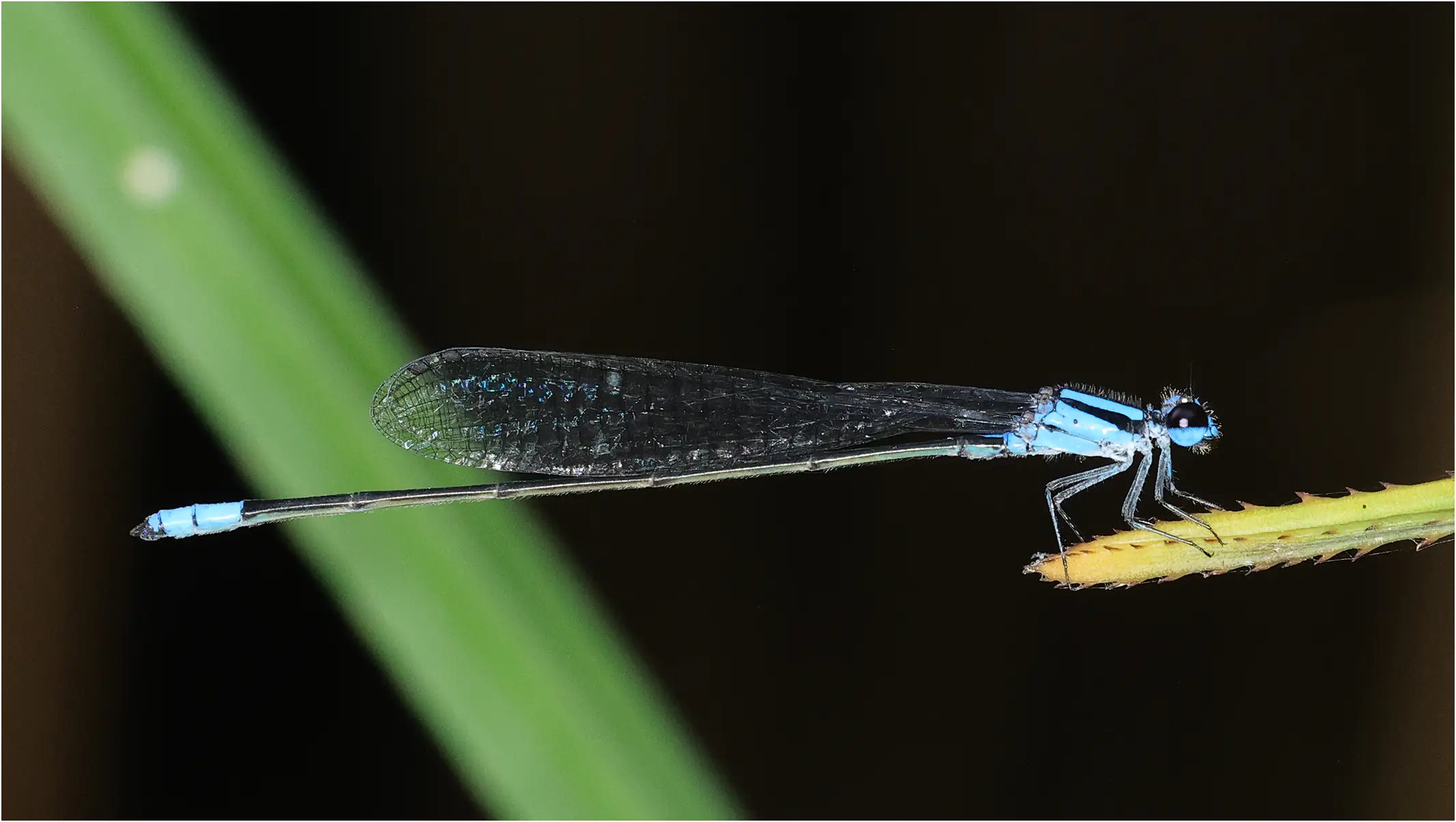
We only encountered Archibasis melanocyana male (Coenagrionidae) on the Maludam River, in the national park of the same name. It is a river whose height varies greatly with the tide, the sea is very close. This river winds through an impenetrable Pandanus forest, which after several kilometers becomes a real flooded forest with peaty soil. In Singapore (2), they live on fast-flowing streams, in swamps, in the forest.
The many A. melanocyana that we saw were standing on the banks of this pandanus forest, frequently perched, as above, on these very sharp palms; the problem in taking decent photos of them is that we were in a canoe. It is an extremely frustrating situation to see so many individuals and only manage to take 2 or 3 decent photos…
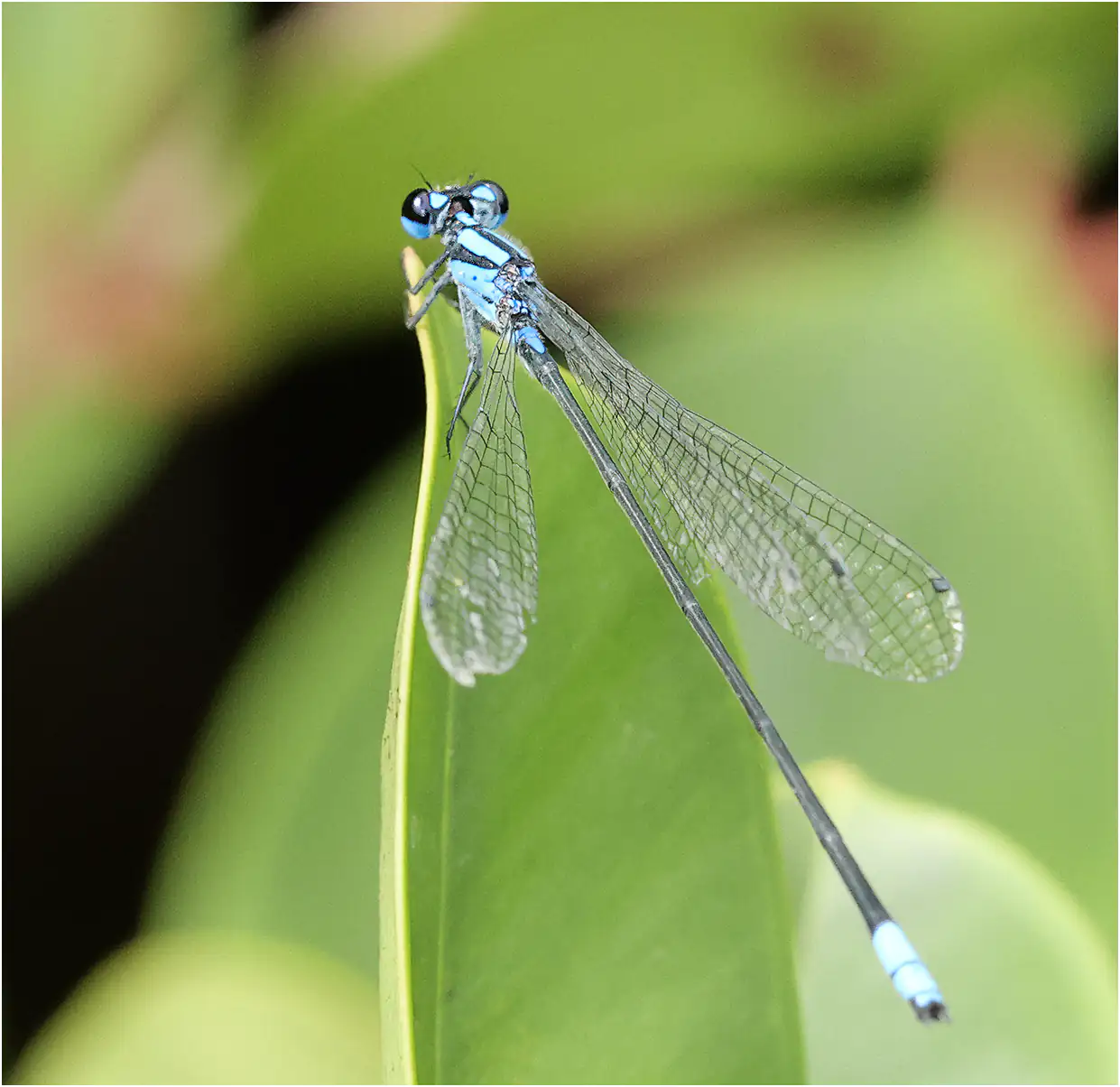
It was found alongside Pseudagrion coomansi but is easily distinguished from this genus by its eyes, the tops of which are largely dark, while those of Pseudagrion are essentially blue. Also note its small, almost square pterostigmas.
Selys, in his description of Stenobasis melanocyna (1) tells us that it resembles, in its coloration, Pseudagrion microcephalum (there are, however, many differences ).
It is closer (in my opinion) to Aciagrion hisopa, but this one is not present in Borneo.
In Singapore (2), it reaches a total length of 37 to 38 mm. The specimens in the Selys collection (1) have an abdomen that reaches 31 to 35 mm and come from Malacca, in the southeast of peninsular Malaysia; they therefore seem significantly longer.
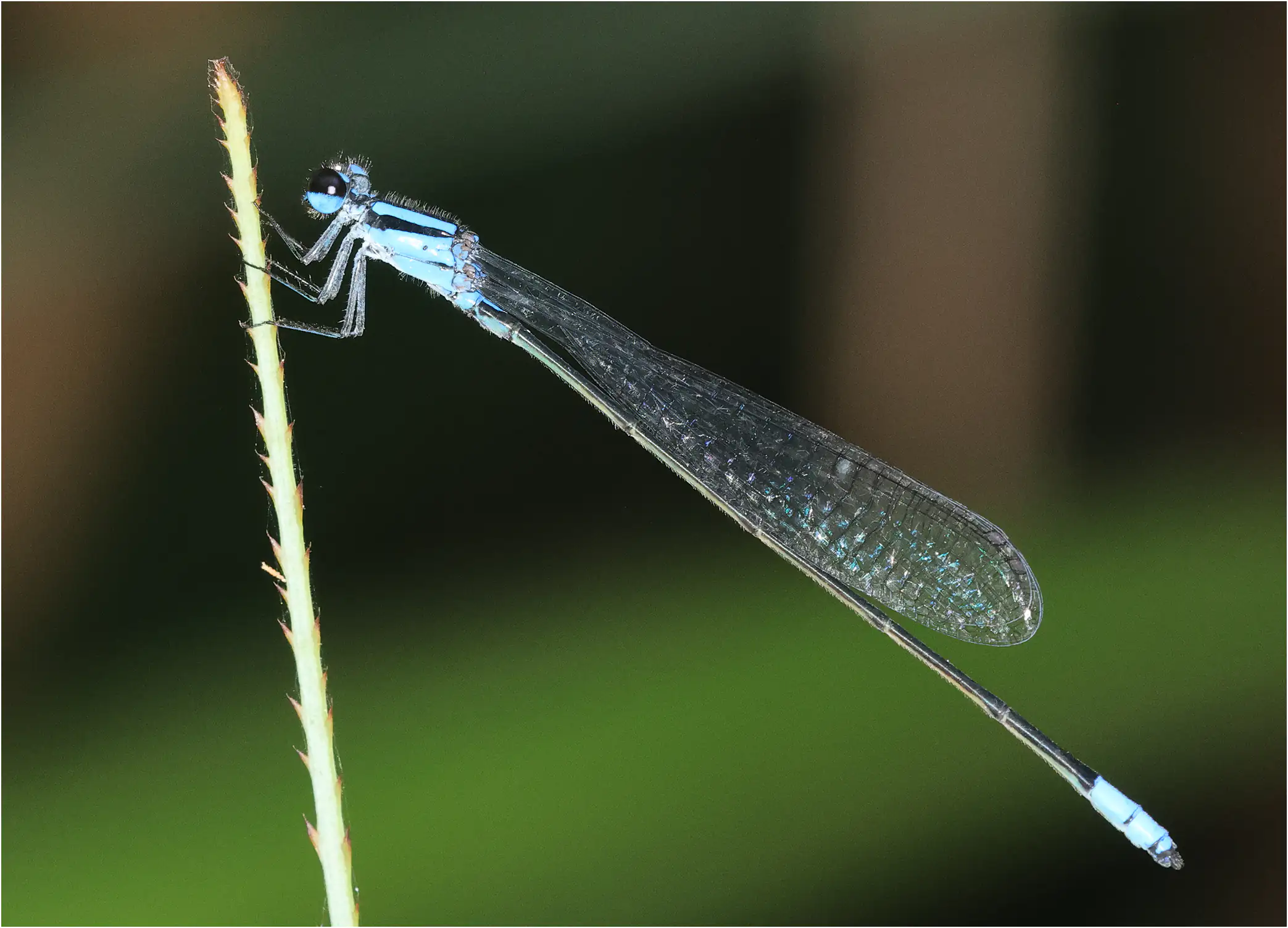
All Archibasis appear to have a black dot in the extension of the very faint line underlining the
interpleural suture , in the manner of our European Erythromma, which can be verified on
iNaturalist . By checking this detail, I also noticed that the observations of A. melanocyna reported at least as many females as males, which is rare for Coenagrionidae. There are few details on the natural history of this rather uncommon species, except in Ngiam & Ng (2) who tell us that they perch quite high, at 2 or 3 meters; one hypothesis could be that the males actually stay more readily in the canopy, as for certain Teinobasis for example.
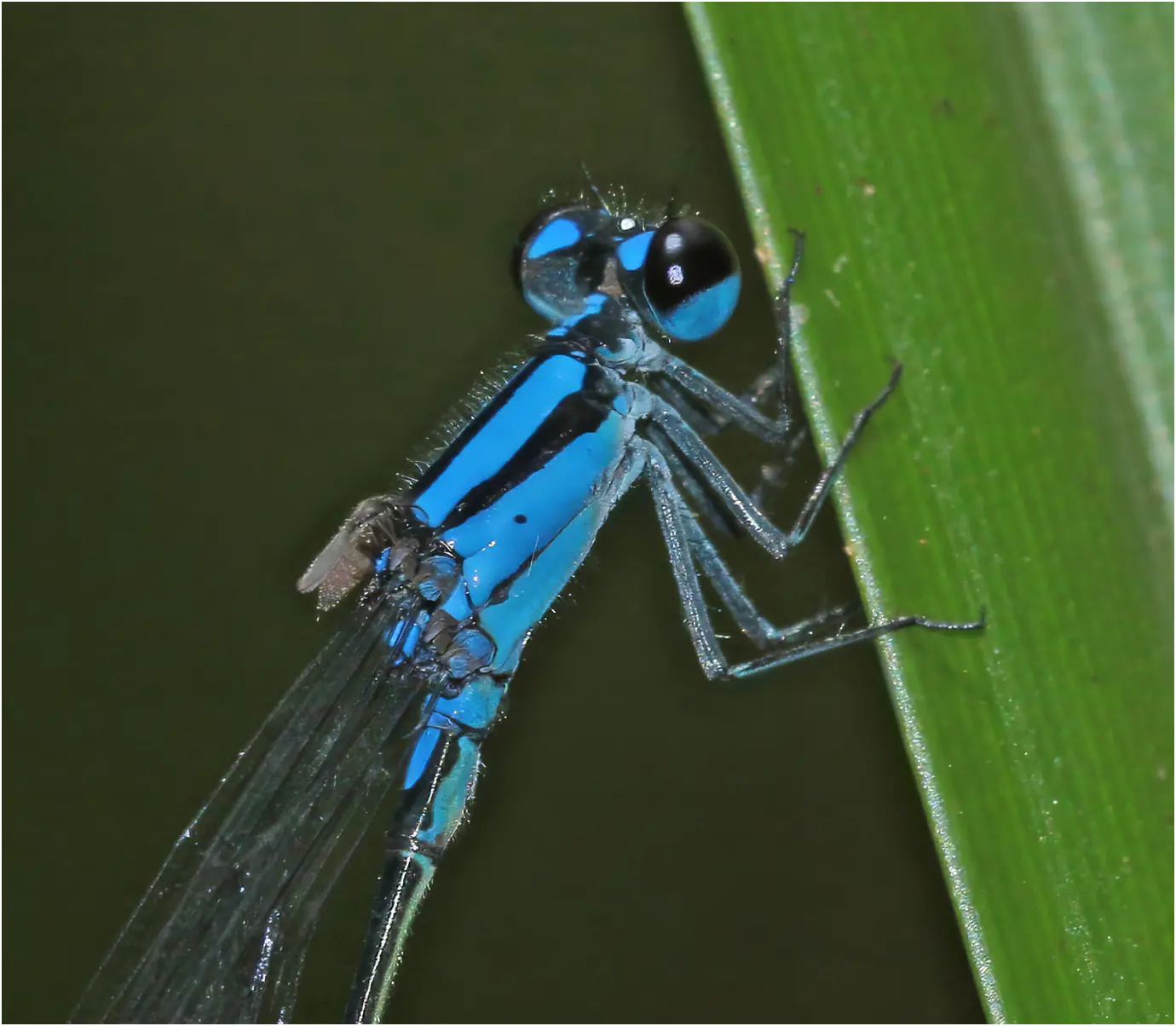
Above is one of the rare semi-close-ups taken from the canoe; the photo is very dark (and cropped), but clearly shows a parasitic dipteran, perhaps of the genus Forcypomyia, which feeds on the hemolymph of its host.
We find half of the blue eyes for the females, the same thoracic patterns (the black dot), the small pterostigmas and a very particular blue pattern on the last segments. The ideal, to identify the females, is still to find them mating or in tandem, which is the case below.
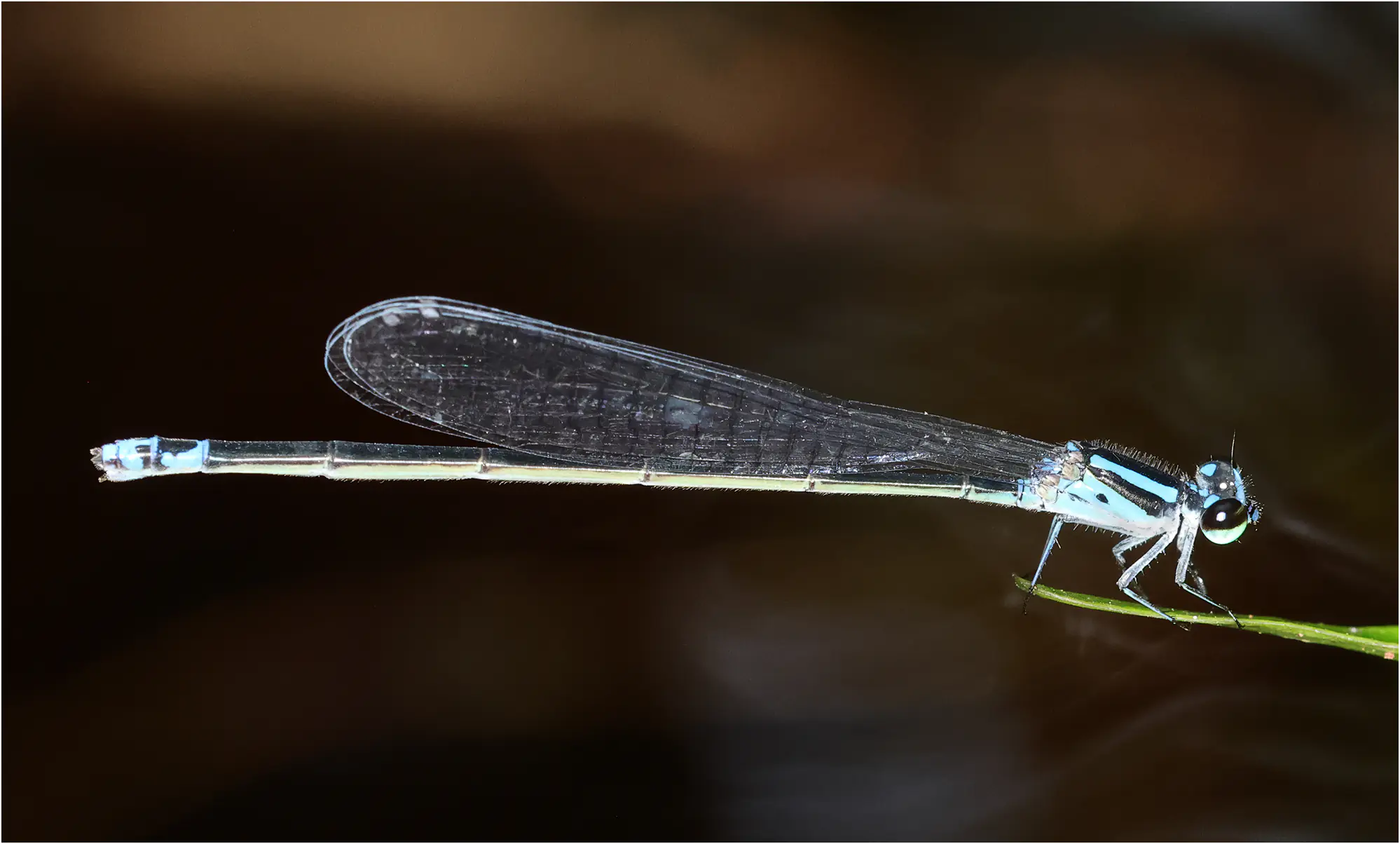
This species, although considered uncommon, is widely distributed across Borneo, Peninsular Malaysia, Singapore and Sumatra. While the territory appears vast, the precise locations where it is known are relatively few.
IUCN Red List .
Still from the boat, a female laying eggs, with a clear view of the stylet under the ovipositor, designed to pierce the tender bark of shrubs to lay eggs.
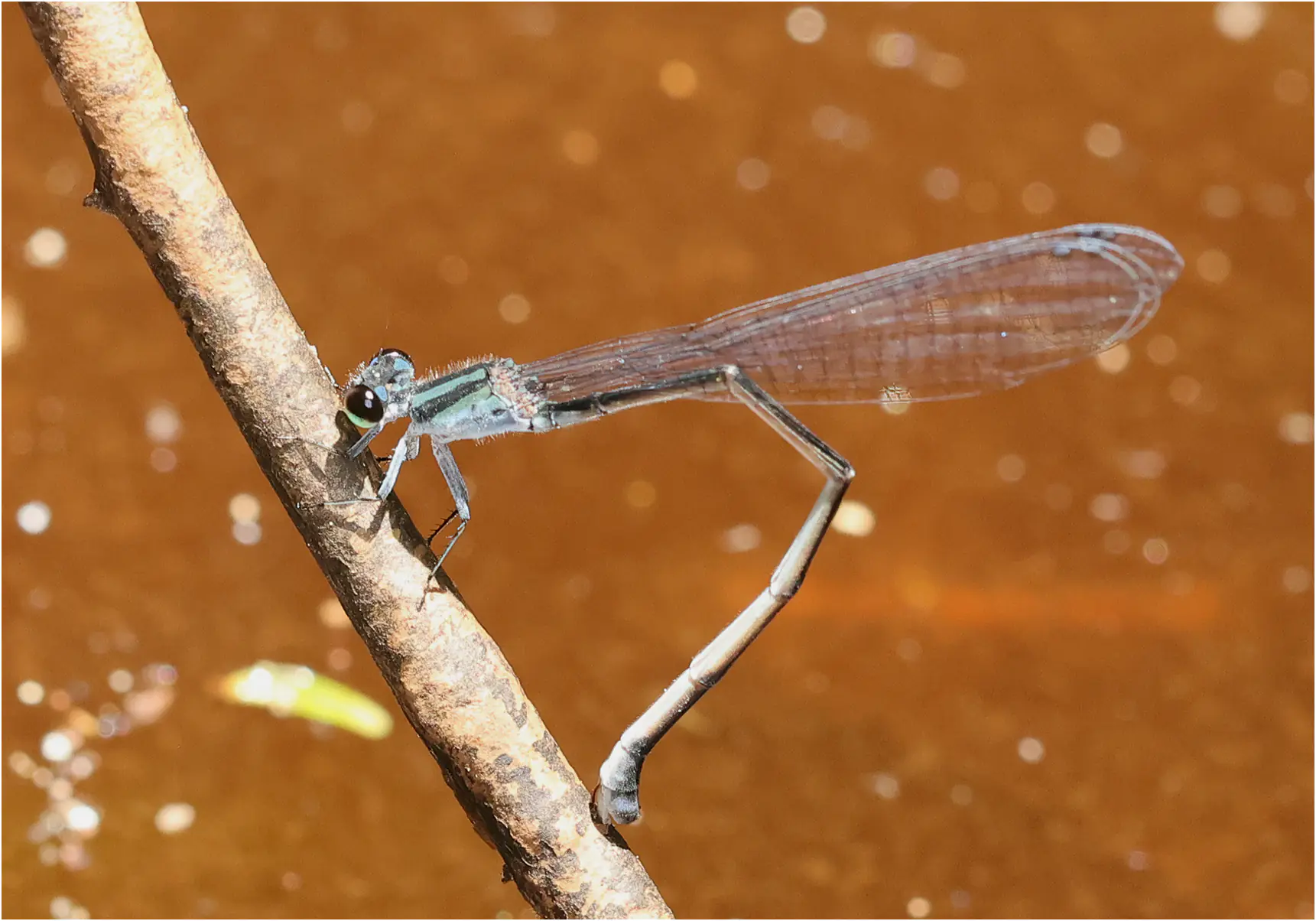
Etymology
Archibasis : Let’s give the floor to Ian Endersby & Heinrich Fliedner (3) whom I have quoted so much; « Selys in 1877 established 5 subgenera of Telebasis (Leptobasis, Stenobasis, Telebasis, Amphicnemis and Pericnemis). Although he does not give an explanation, Kirby (1890) replaces Stenobasis with Archibasis, as if it were a homonym and not a valid name. Stenobasis was derived from the Greek στενός for narrow and βάσις which means that on which one stands , pedestal or base . This refers to the petiolate base of the wings: « Wings petiolate up to the postcostal basal nerve or even a little further, a little before the origin of the quadrilateral. »
Kirby retains the root βάσις , preceded by ἀρχή which means beginning, origin . »
Melanocyana , from the ancient Greek melas, melanos which means black and from κύανος for blue . Indeed this odonate is blue and black…
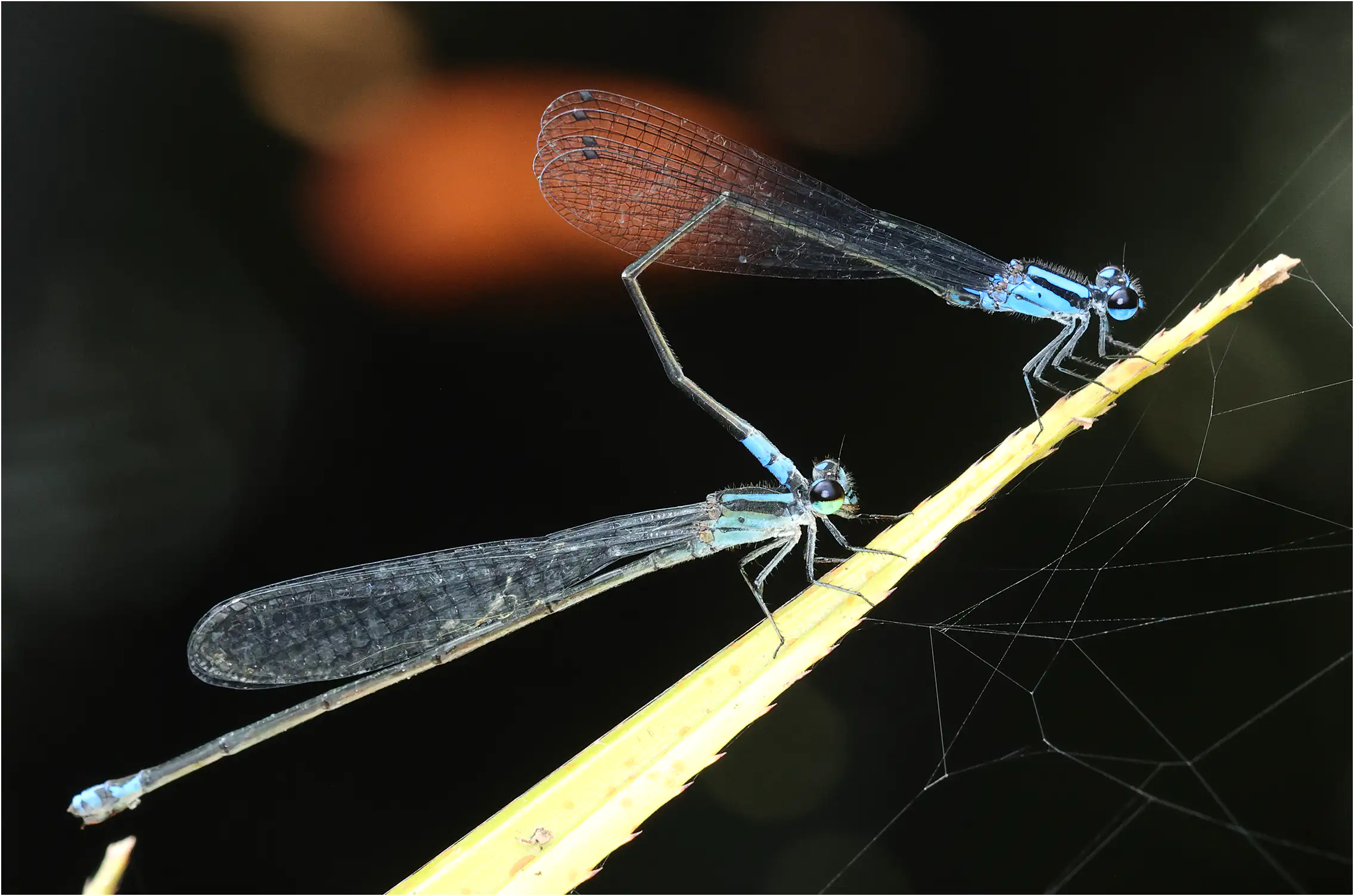
In English it is called Blue-nosed sprite and in Malay Sayaptirus Peri Hidung-biru .
1- Selys-Longchamps, E. de 1877 – Synopsis des Agrionines, 5eme légion: Agrion (suite et fin). Les genres Telebasis, Argiocnemis et Hemiphlebia. Bulletin de la Classe des Sciences, Académie Royale de Belgique 43: 97-159. P. 110.
2- Robin Ngiam & Marcus Ng – A photographic guide to the Dragonflies and Damselflies of Singapore – John Beaufoy Publishing – 2022
3- Ian Endersby & Heinrich Fliedner, The Naming of Australia’s Dragonflies, Busybird publishing, 2015.